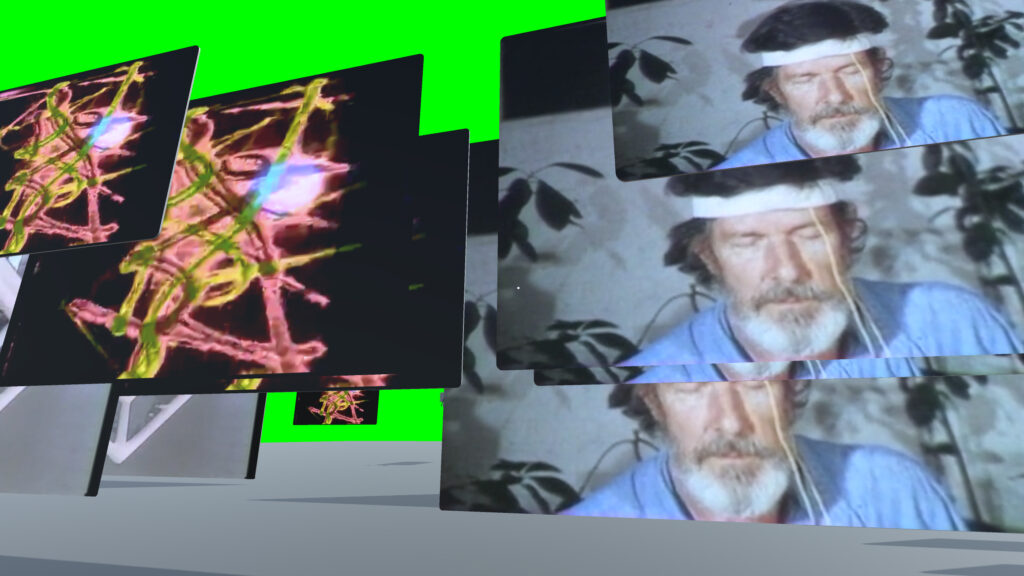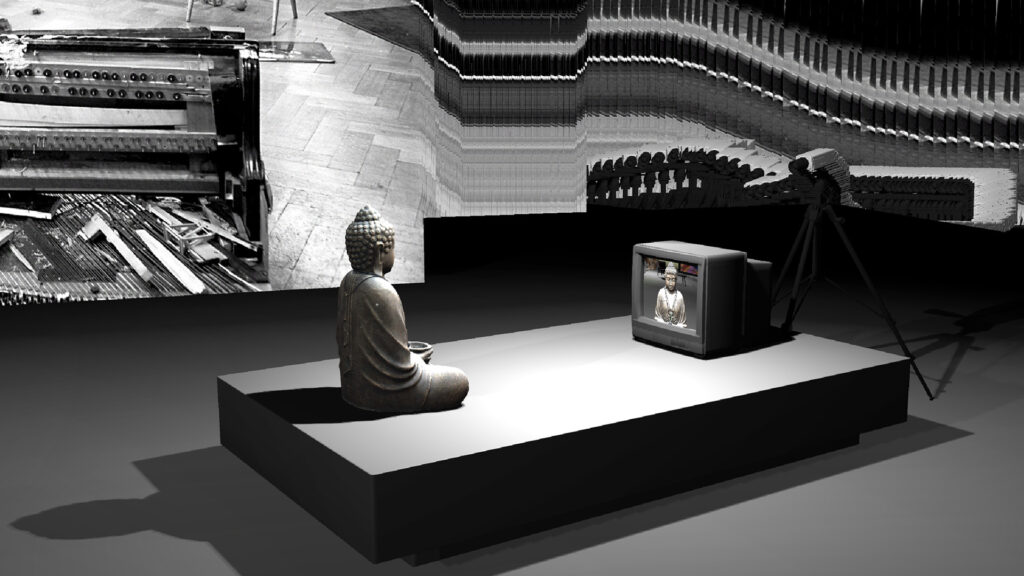Although an extensive survey and classification of past and recent digital exhibitions can provide valuable insights through comparison and analysis, we observed that existing studies tend to focus primarily on the museum itself, specifically its ongoing digital transformation, including changes to its identity, objectives, and means of dissemination. While new mediation and documentation tools are certainly important, the investigation of virtual or remote exhibitions and the artworks that constitute them within these digital constructs, and their consideration as instruments for measuring the transformative effects at play, deserves to be further studied.
This is notably the case regarding the modalities of their transposition in digital form—when the artworks are not originally digital—and of the quality of their rendering or display. It is also of interest regarding online accessibility and the way in which this may affect the originality of the works, and the relevance of the reception by the public.
Contextualized within the broader topic of the “digital exhibition,” Paik Replayed focuses on this missing insight regarding digitized artworks and their reception, as well as how this may affect curatorial practices and the conception of the digital exhibition in turn, which represent the main knowledge gaps we seek to investigate in detail.

(Re-)Viewing Paik (2021), preliminary tests and research. Img. & 3D, P. Keller (ECAL, HES-SO).
To understand if, and importantly how, an advanced immersive and digital exhibition (software application) that allows the experience of a curated set of digitized artworks remotely, modifies their nature and the way they are experienced (Candy, 2014), and possibly transforms the museum institution itself in turn, we develop Paik Replayed as a comprehensive and comparative study of the online contemporary exhibition format.
We take as a central point and element of assessment the artworks themselves, framed within this research to a significant and representative, yet limited corpus of Korean artist Nam June Paik’s works (1932–2006), made available for our study during the preliminary research (Re-)Viewing Paik (ECAL, 2021). These artworks are digitized, exhibited, and circulated as an online, curated, and immersive exhibition, resulting from a strictly documented process of co-design among art historians, curators, exhibition designers, and developers (Avram et al., 2020). They then operate as “cultural probes” (Gaver and Dunne, 1999; Boucher et al., 2019), collecting data about their dissemination, and are methodologically considered in this context as “boundary objects” (Carlile, 2002; Star, 2010; Johnson et al., 2017) between different agents (artist, artworks originals, art historians, curators, institutions, exhibition designers, scientists, technologies, locations, and online visitors), all part of the common network of the exhibition, to be described and traced as a result of our investigation (Akrich and Latour, 1992; Latour, 2005).
We monitor and document the reception of this exhibition as experienced by a selection of online visitors, from their homes or other distant locations deemed appropriate, based on in-app data collection of users’ behavior and engagement (GDPR compliant), non-participant photographic observation, and qualitative interviews with digital visitors (Nova, 2022). We consider and observe in parallel the wider circulation of the same set of artworks on the web, and in some cases their various “copies” (sometimes “poor copies”). We collect significant comments left online by users in dedicated areas and ask whether these are also part of an extended, yet unplanned “folk” network of the digital exhibition.
After tracing and analyzing the relations between the digitized artworks and the other agents in the updated network (human and non-human) and considering their mutual effects, we compare the outcomes of this experience with other cases and benchmarks from an initial survey of digital exhibitions and their clustering in the form of a typology of cases.
Finally, we draw lessons from these steps and comparisons to provide insights into how the observed digitization processes may affect the reception of originally non-digital artworks in a digital exhibition setting, from a sensitive and historical perspective. If applicable, we subsequently generalize by using a broader digitized corpus in open access contributed by the EU research project Beyond Matter (Beyond Matter, 2023), to provide feedback to peers, curators and online exhibition designers, and further disseminate the results to the public.

(Re-)Viewing Paik (2021) preliminary research, screenshot with digital transposition test of TV Buddha (original by N. J. Paik, 1974).
Img. & 3D in Unity Engine, P. Keller (ECAL, HES-SO).
Research Questions
By keeping a focus on the limited case study provided by Paik’s artworks during the preliminary study (ECAL, 2021), and after the establishment and consolidation of an analytical typology of existing cases, three sets of questions help us articulate the main problematic of the digital exhibition with Paik as an initial case study, later on an extended corpus, and in this context the issues of transcription and reception of digitized artworks online:
● Which of Paik’s artworks are initially included in the body of work to study, and are these already digitized or available online? If so, what digitization processes were used from their original counterparts, and for what dissemination purpose? Is there a larger corpus already accessible online, and how?
● During the development of the immersive digital exhibition that is part of Paik Replayed, what digital transposition processes are used, and for what reasons and curatorial objectives? What are the observed results and reception, and by whom? Successes and failures of the procedure?
● What learnings about the processes and agents involved can be drawn and mapped from the Paik Replayed experience? How do these compare to other initiatives and to the established typology? Can these be extended to other artworks and typologies of digital exhibitions or museums? If applicable, which ones and how?
Methodology & Process
The interdisciplinary process that we have in place, and which then contribute to structure the working steps of Paik Replayed, combines different methodologies linked to the disciplines and researchers involved in our study: art history, curating and digital exhibition design.
While bringing together theoretical and practiced-based knowledge, these draw on the history of video art and curatorial practice, research through design completed by ethnographic observation, actor-network theory, and analysis, along with the analytical tool of boundary object.
These methods then each contribute to the four main research objectives of the project (WP1 to WP4, WPT), as they allow the focused and dynamic assembly of this expertise and methods to help reach the knowledge acquisition targets.
PK – 2023
AKRICH, M., LATOUR, B. (1992). A Summary of a Convenient Vocabulary for the Semiotics of Human and Nonhuman Assemblies, in: BIJKER, E., LAW, J. (eds.) et al. (1992). Shaping Technology/Building Society – Studies in Sociotechnical Change, MIT Press
AVRAM, G., CIOLFI, L., MAYE, L. (2020). Creating tangible interactions with cultural heritage: lessons learned from a large scale, long term co-design project, in: CoDesign – International Journal of CoCreation in Design and the Arts, Vol. 16, Issue 3
BEYOND MATTER (2023). Beyond Matter: https://beyondmatter.eu/, beyondmatter.eu
BOUCHER, A., BROWN, D. OVALLE, L., SHEEN, A., VANIS, M., GAVER, W., MATSUDA, N. (2019). ProbeTools: Unconventional cameras and audio devices for user research, in: Interactions, Vol. 26, Issue 2
CANDY, L. (2014). Evaluation and Experience in Art, in: CANDY, L., FERGUSON, S. (eds.), et al. (2014), Interactive Experience in the Digital Age, Evaluating New Art Practice, Springer
CARLILE, P. R. (2002). A Pragmatic View of Knowledge and Boundaries: Boundary Objects in New Product Development, in: Organization Science, Vol. 13, Issue 4
ECAL (2021). (Re-)Viewing Paik: https://ecal.ch/en/feed/projects/4838/re-viewing-paik/, ecal.ch
GAVER, W., DUNNE, A. (1999). Design: Cultural Probes, in: Interactions, Vol. 6, Issue 1, Association for Computing Machinery
JOHNSON, M. P., BALLIE, J., TINE, T., BROOKS, E. (2017). Living on the Edge: design artefacts as boundary objects, in: The Design Journal – An International Journal for All Aspects of Design, Vol. 20, Issue Sup. 1
LATOUR, B. (2005). Reassembling the Social: An introduction to actor-network-theory, Oxford University Press
NOVA, N. (2022). Exercices d’observation. Dans les pas des anthropologues, des écrivains, des designers et des naturalistes du quotidien, Premier Parallèle
STAR, S. L. (2010). This is Not a Boundary Object: Reflections on the Origin of a Concept, in: Science, Technology, & Human Values, Vol. 35, Issue 5